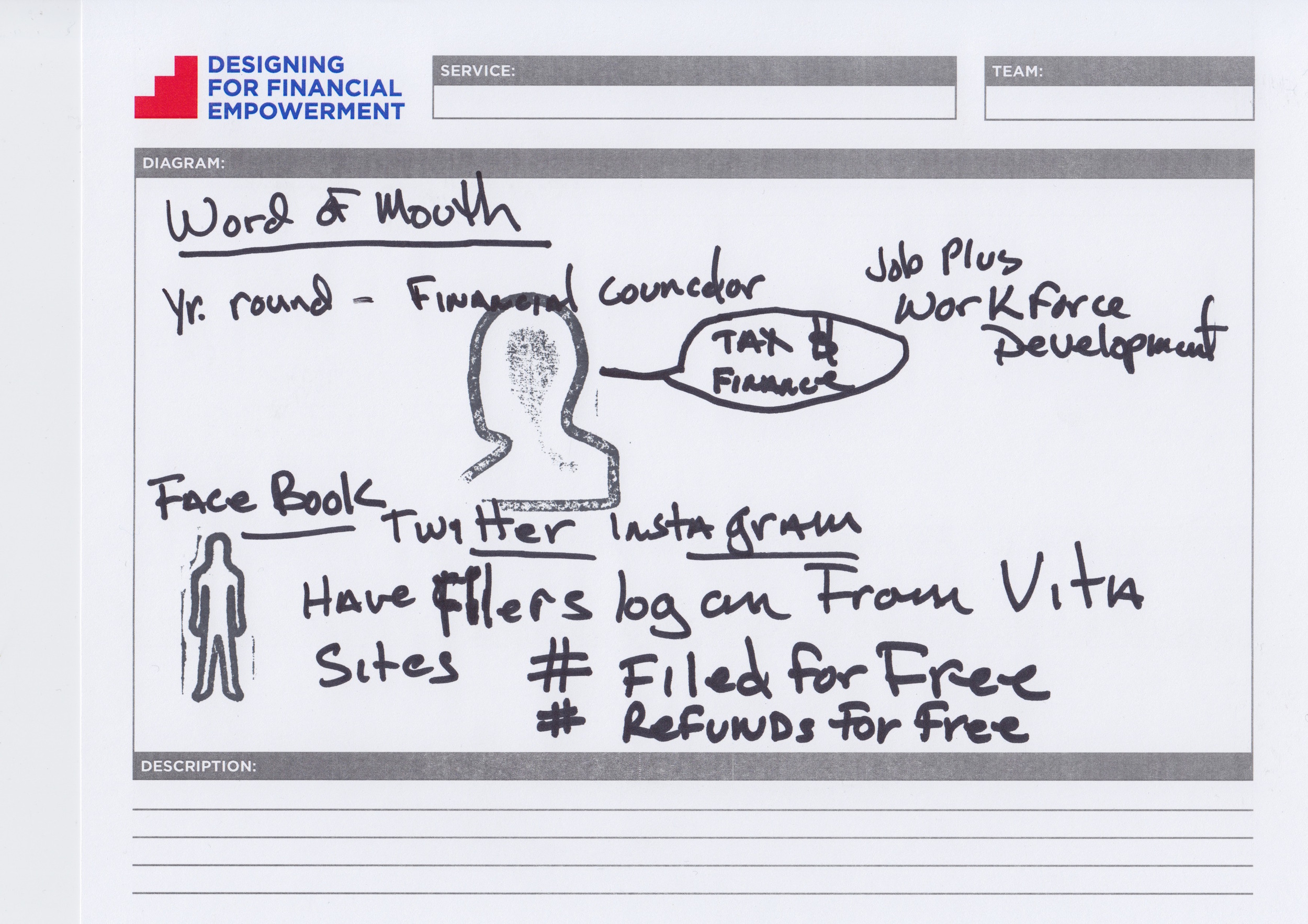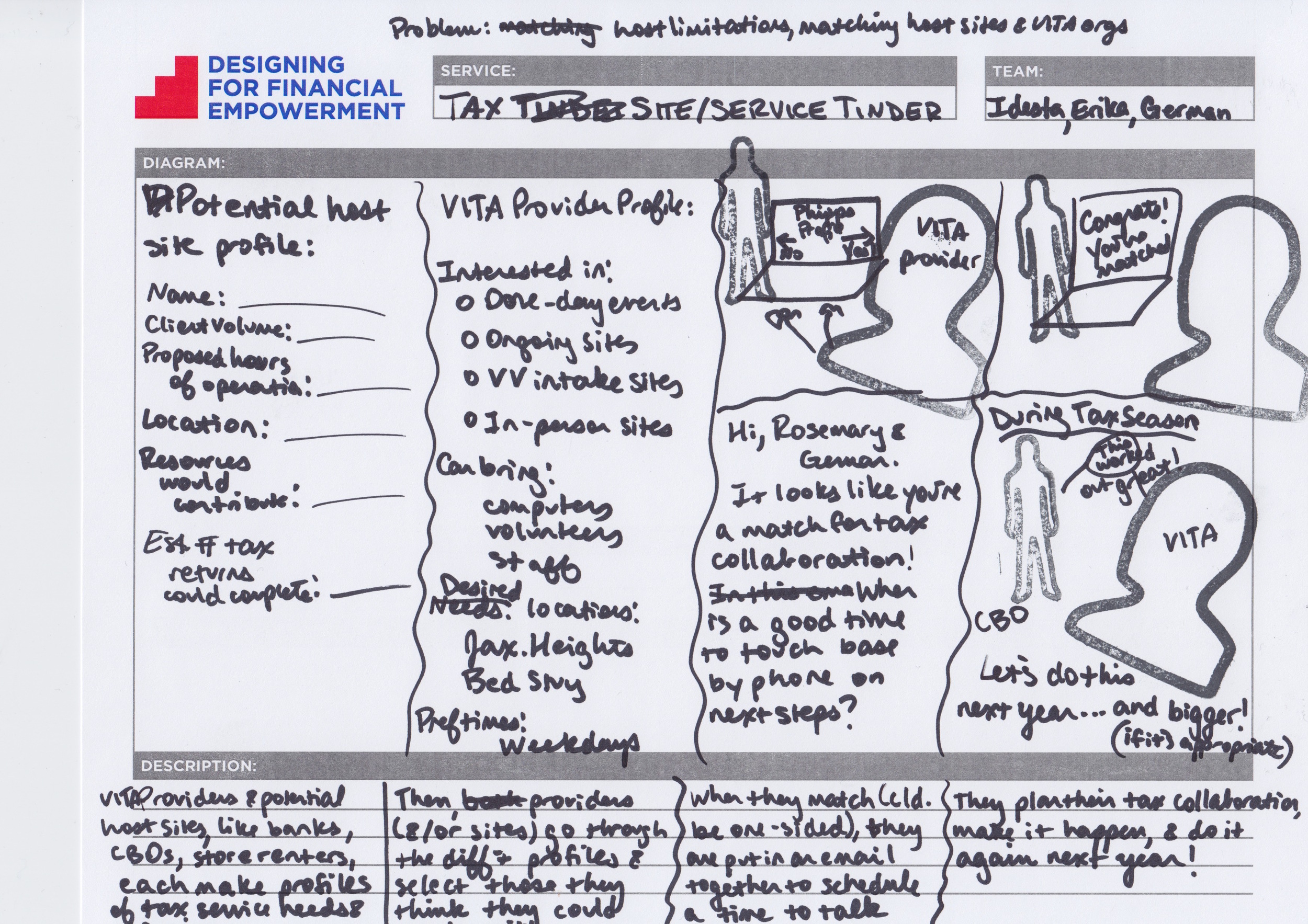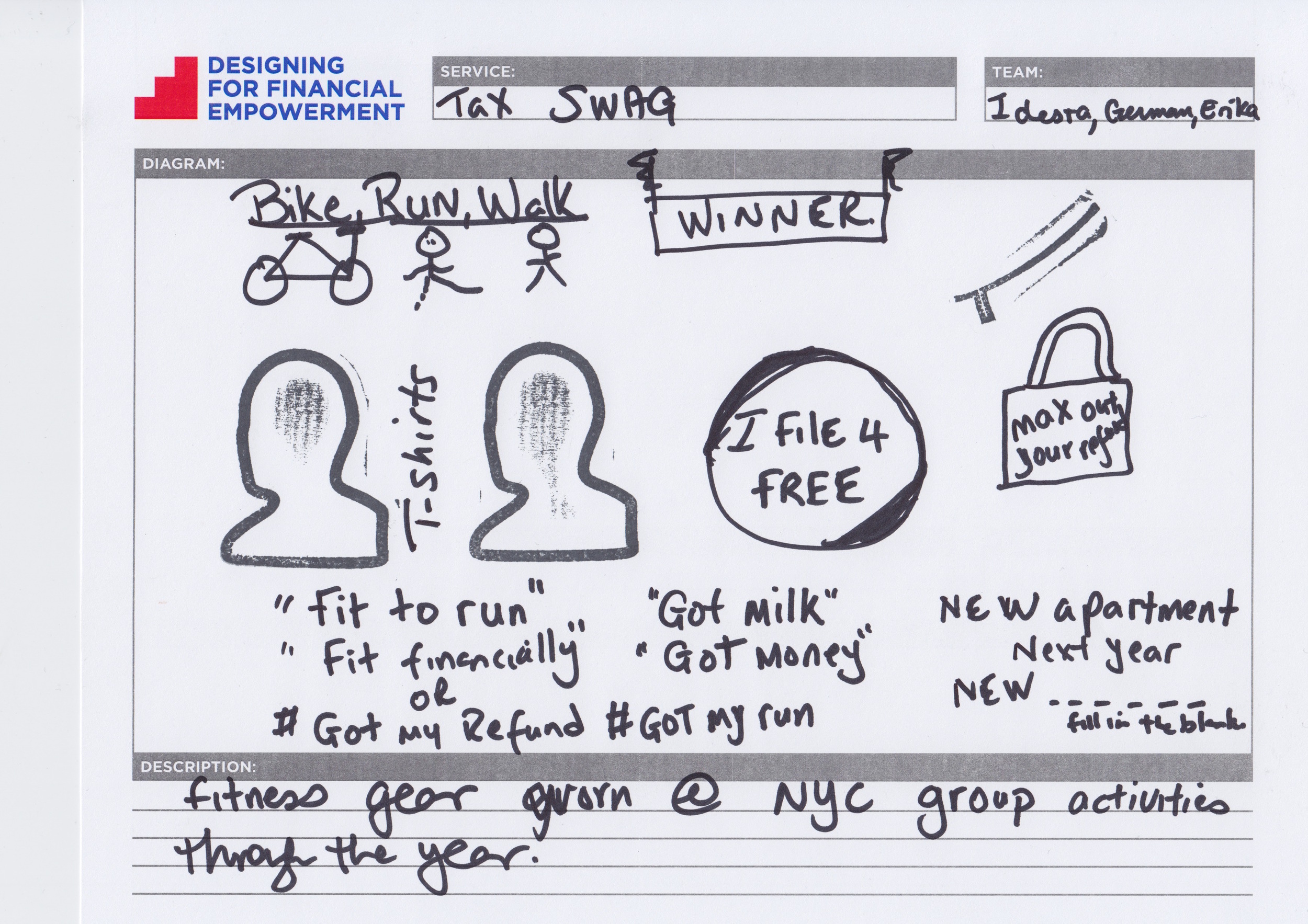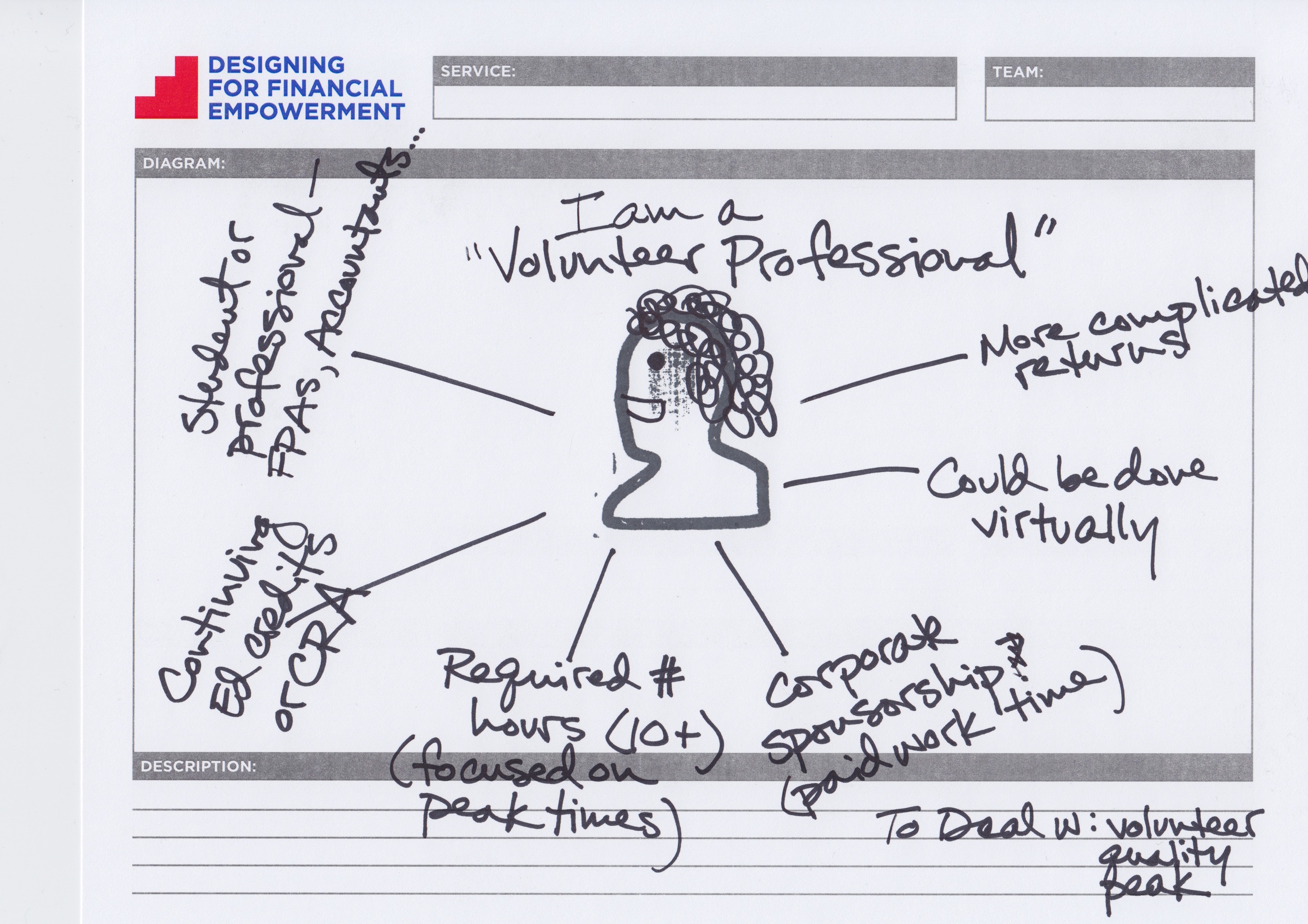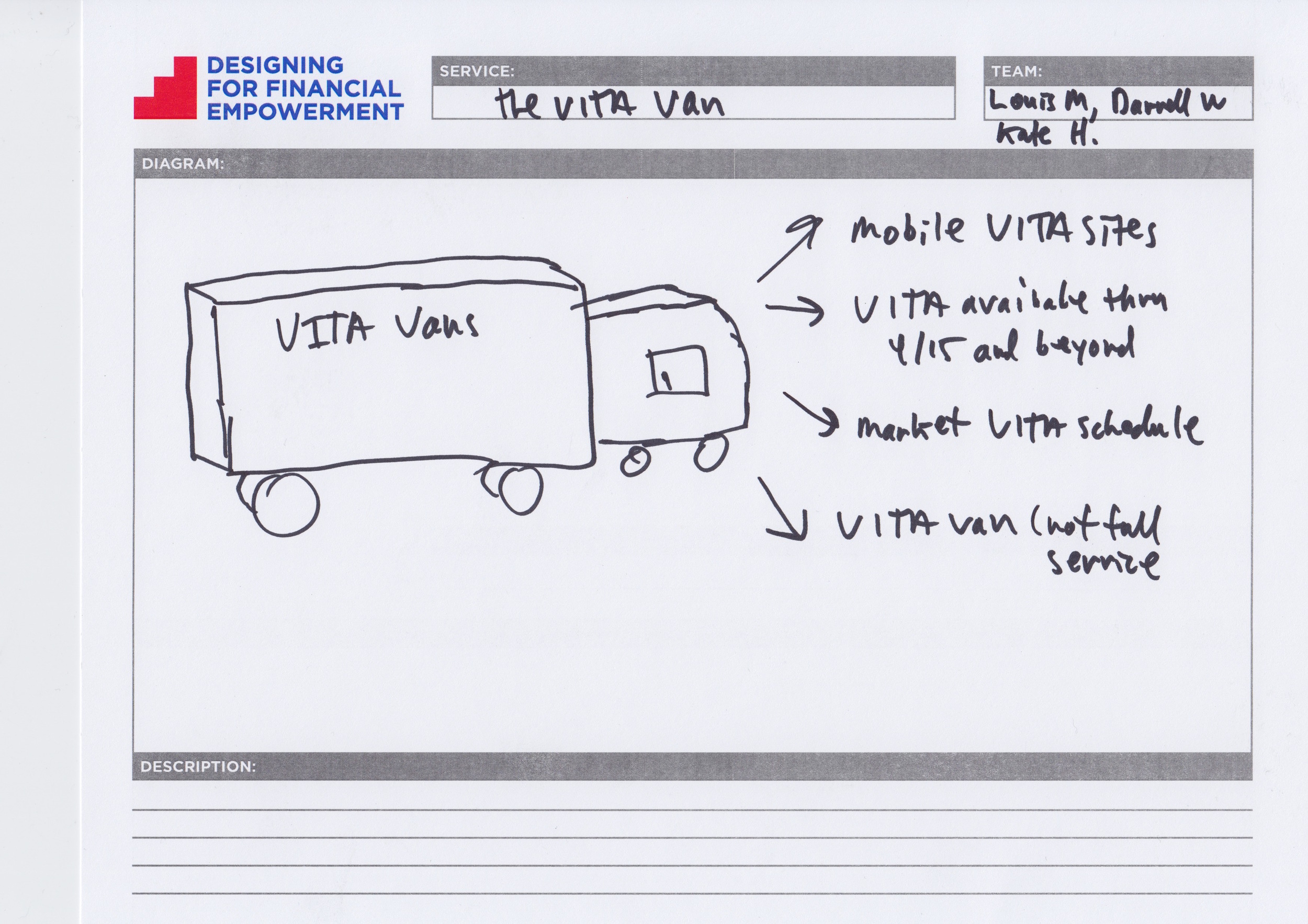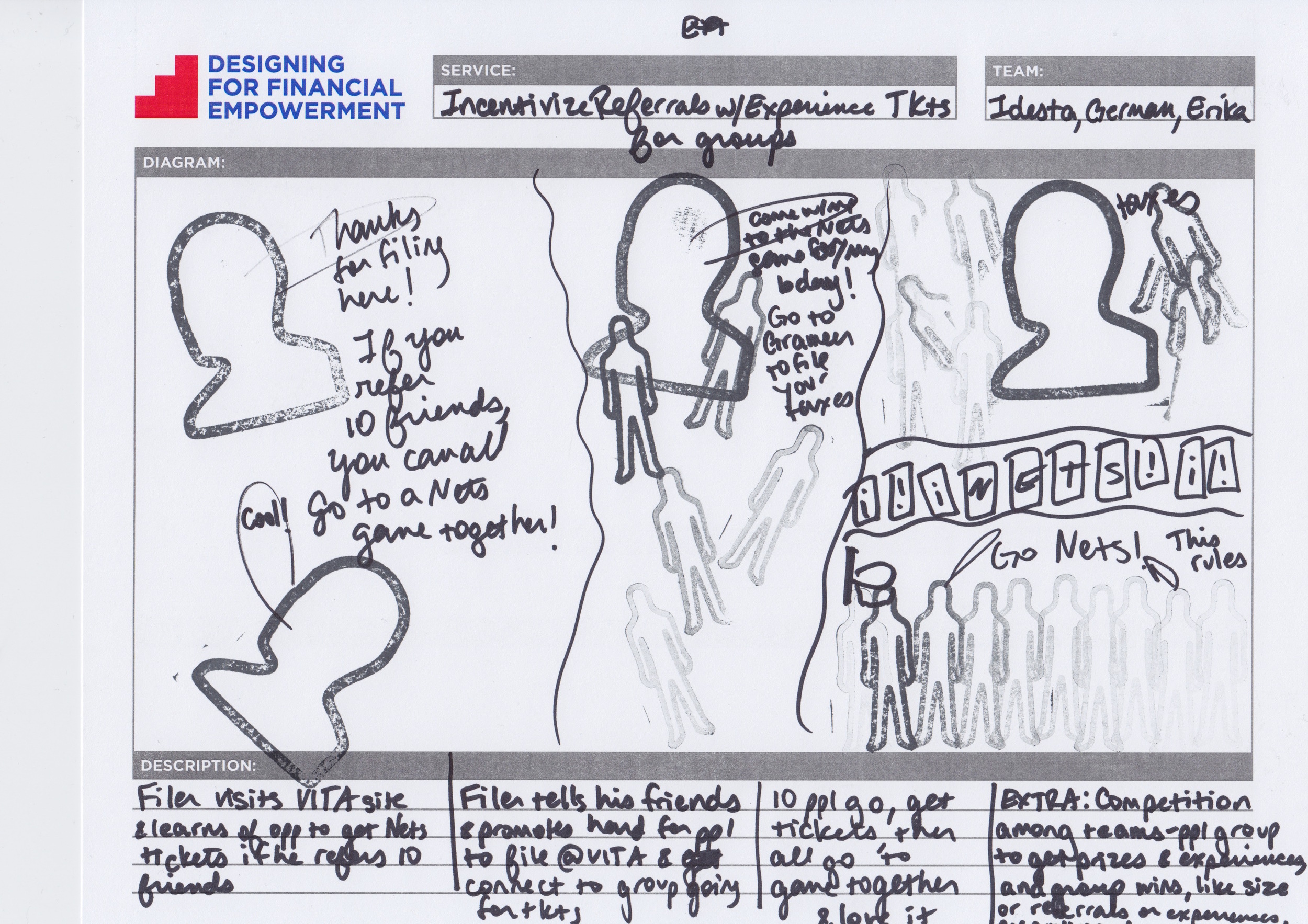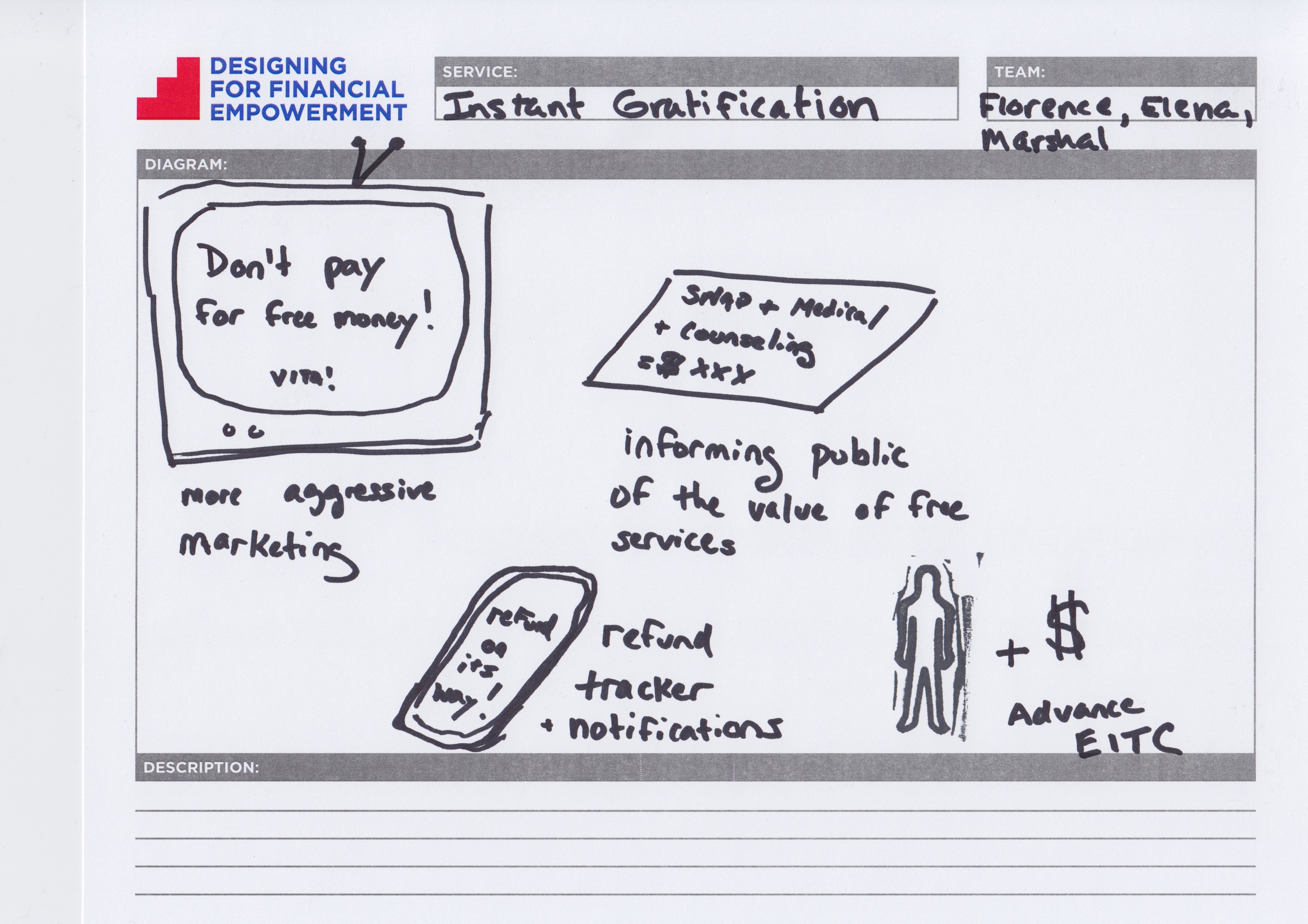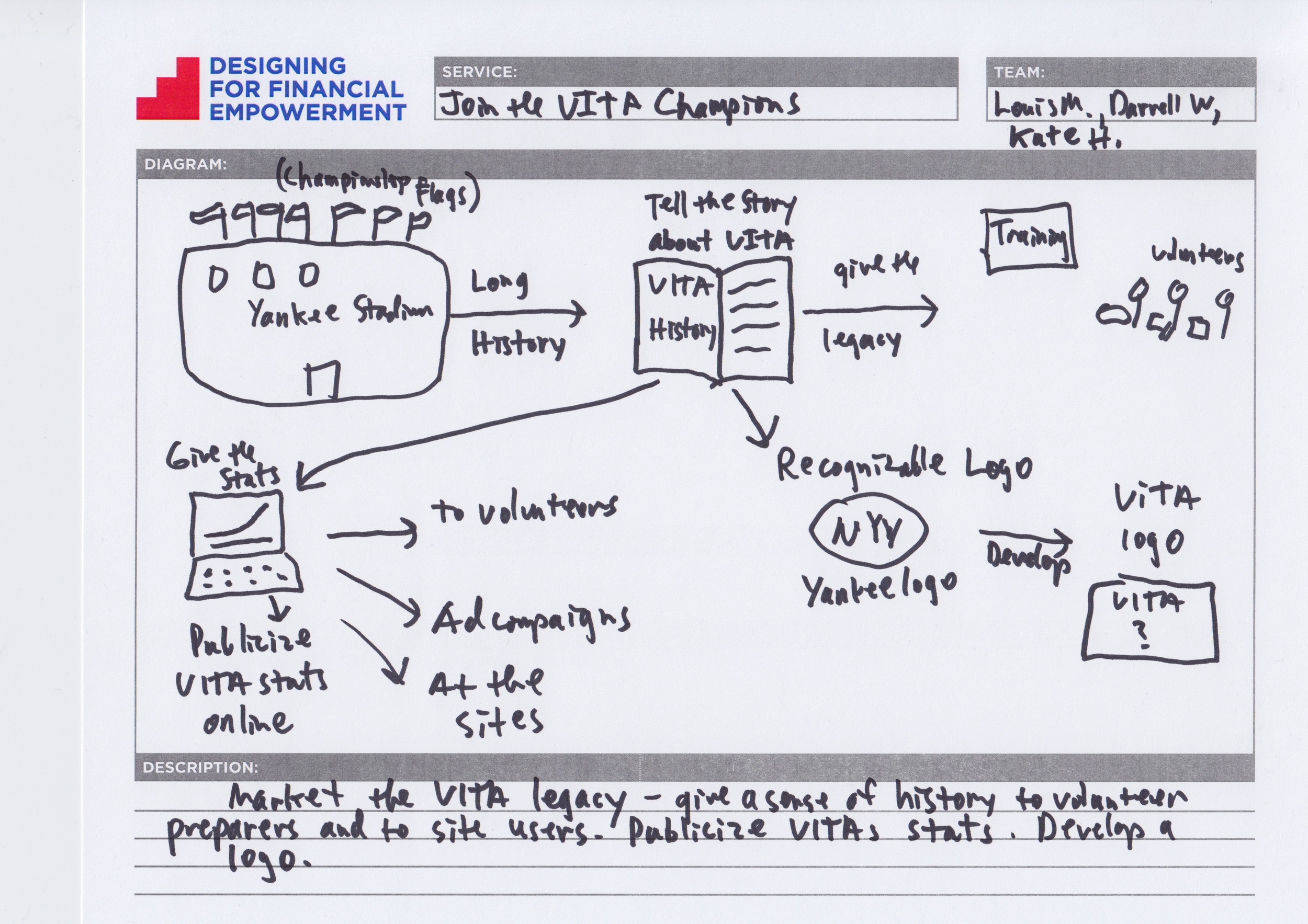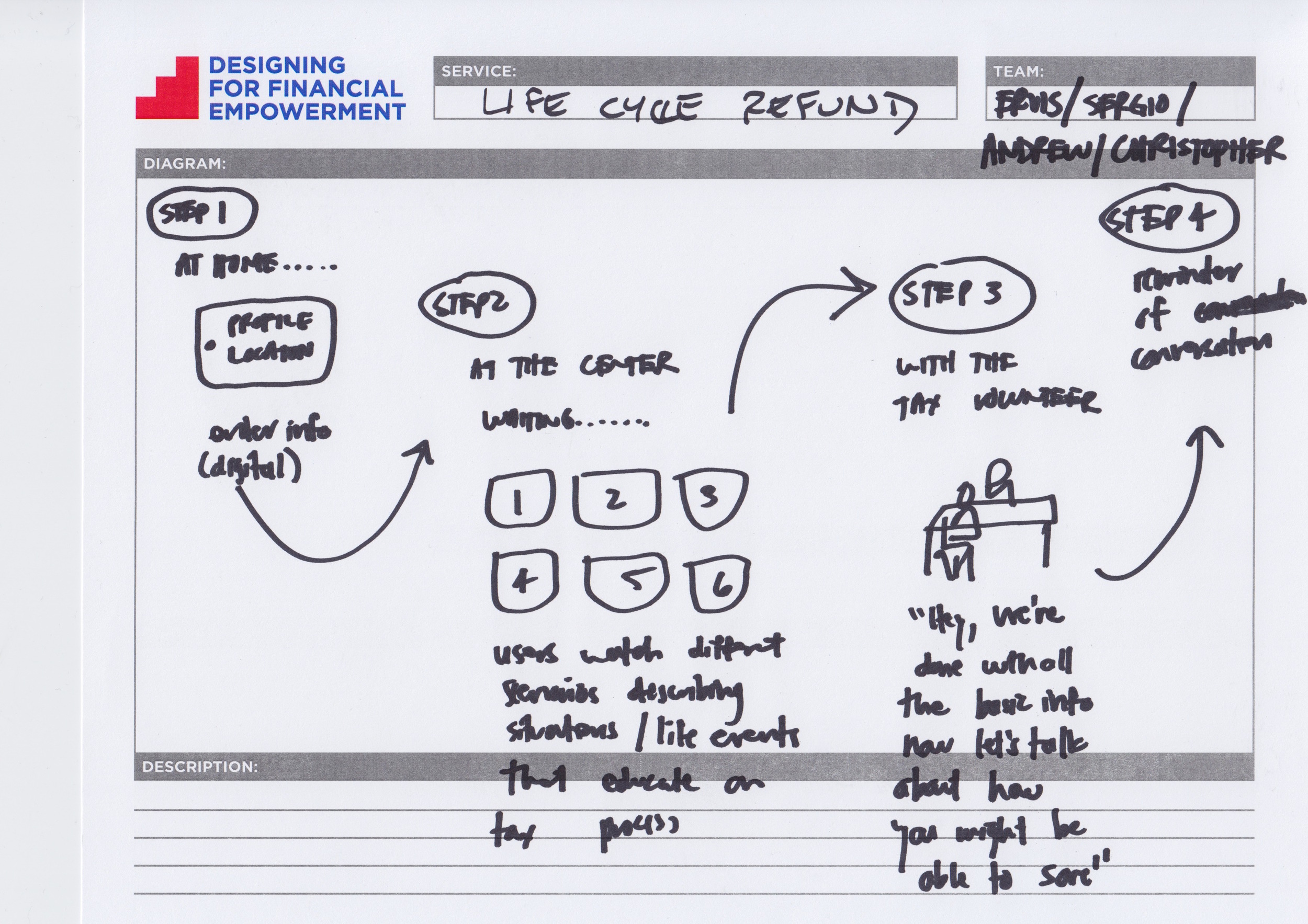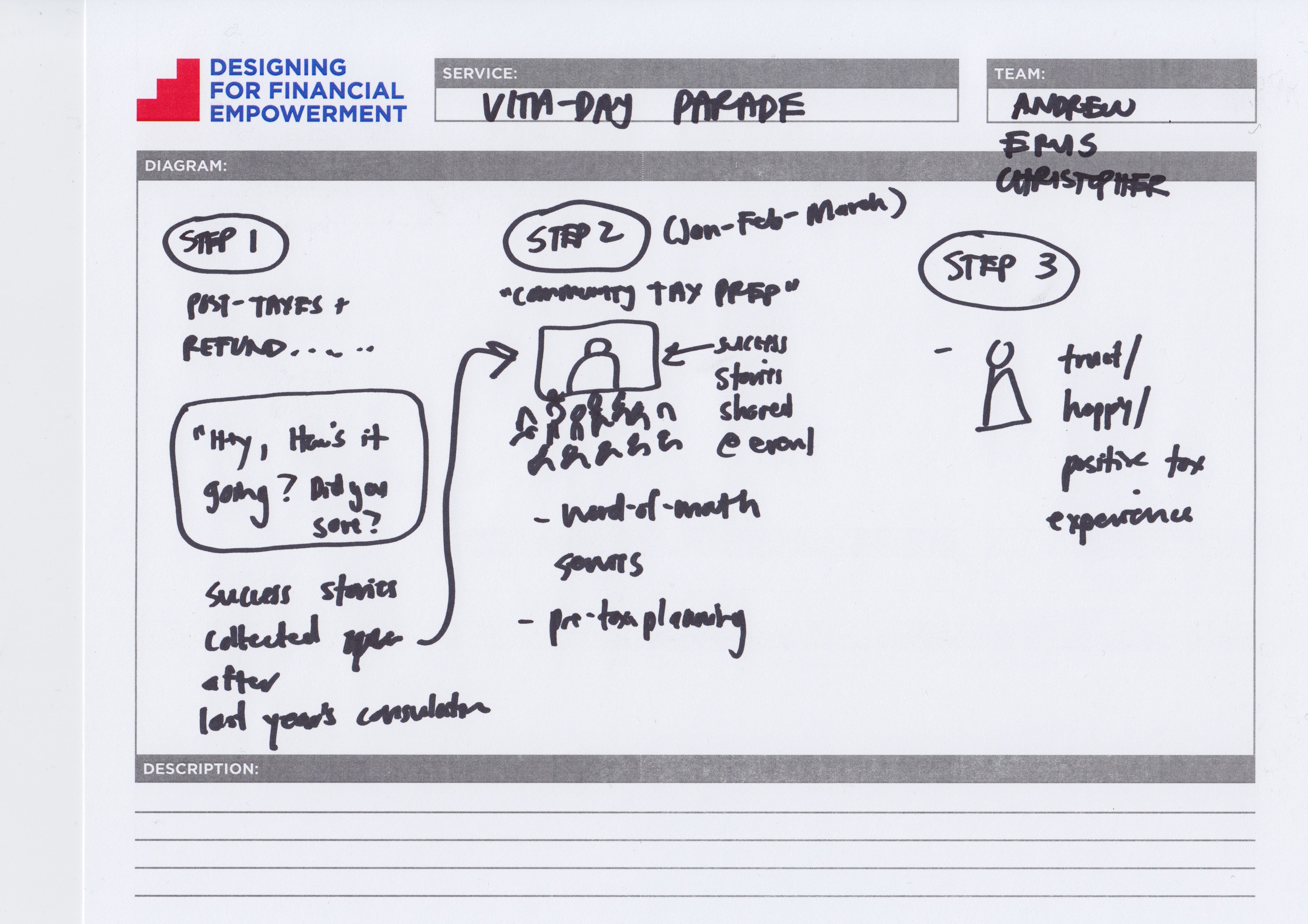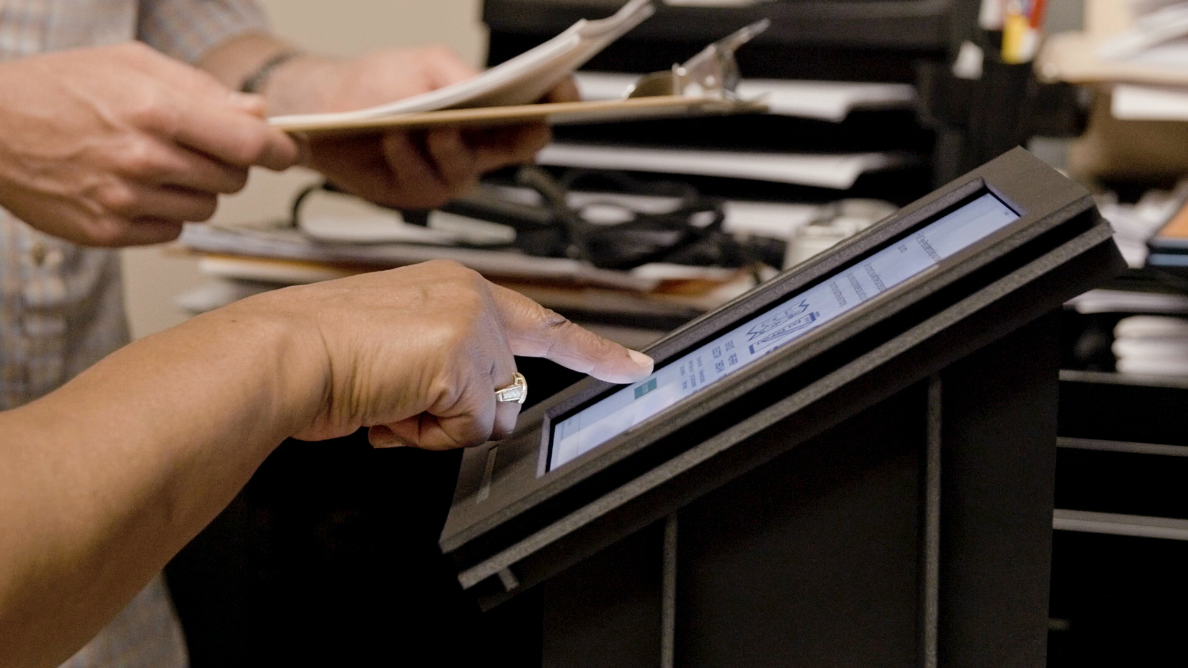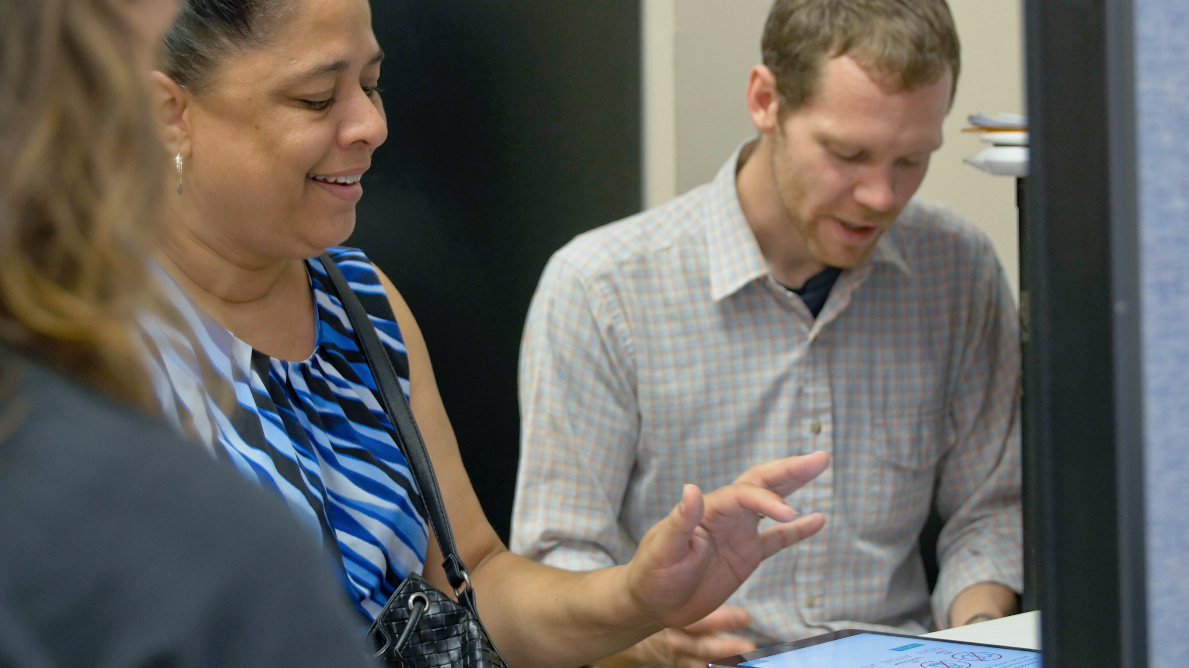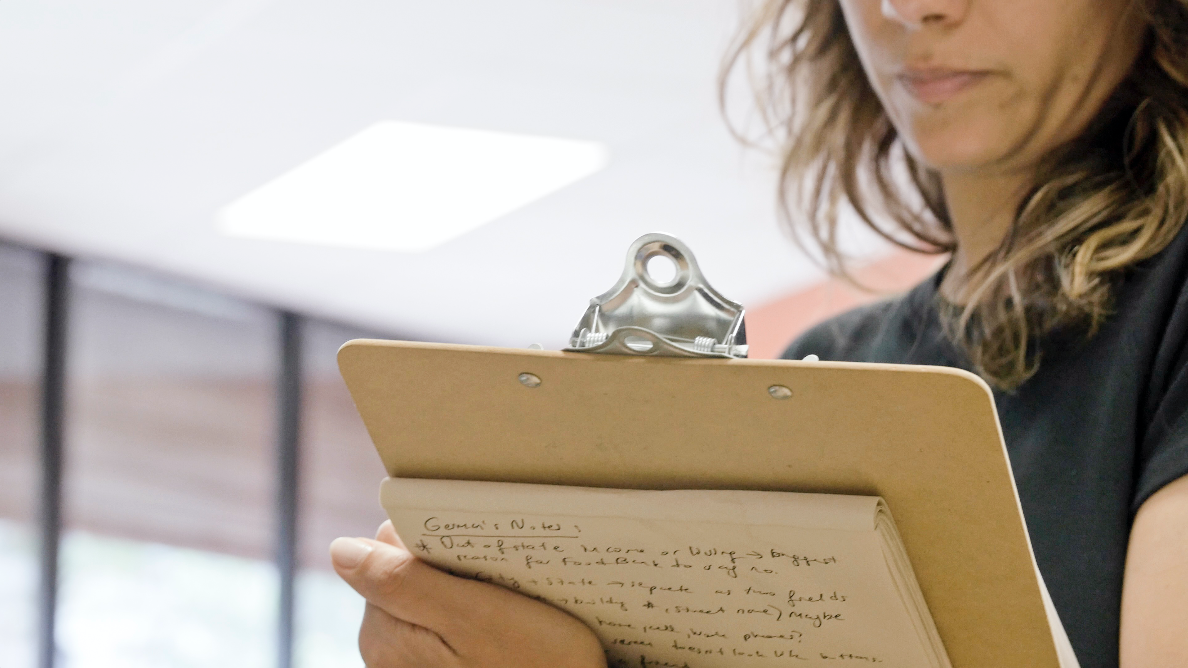DISCOVERY
The discovery phase began with the creation of an interdisciplinary team of designers, advisors, subject matter experts and civil servants that could offer a range of perspectives and expertise. During this process, we created also a map of all the various stakeholder groups involved in the service and the connections between them. In our research, we consulted with these professional experts, but most importantly with those whose knowledge derives from daily experience of the service. We held forums and panels with Food Bank employees on their experience with VITA services; conducted interviews with current and potential users of VITA; and observed the intake process on-site during tax time.
To summarize our findings, we distilled our observations into a deck of “Challenge Cards”, where each card represented an area of tension faced by filers and providers during the delivery of VITA services. The filers’ challenges included that VITA sites are often located too far away or too crowded, and filers are often not well-informed about their own responsibilities and accountability in the tax filing process. For instance, filers often fail to bring all required documents to VITA locations and end up delaying the filing process. Meanwhile, the providers cannot compete with paid-service advertisement and are faced with limited staff resources. Additional challenges included the fact that volunteers at the VITA sites were not always efficiently utilized, and were either overwhelmed with too much work or faced too much idle time. Some residents were also negatively affected by services received by private paid tax preparers which supported our vision to expand existing capacities of VITA services.
outputs
Stakeholder Diagram
A visual representation of our evolving understanding of the parties involved in promoting and providing free tax preparation services for low-income New Yorkers.
Challenge Cards
These cards highlight the main challenges faced by the different stakeholders during the delivery of VITA services. The findings were distilled from our research during the discovery phase, and they formed the basis for the co-design sessions.
Discovery (In) Progress Report
This report summarizes the discovery phase chronologically, highlighting challenges but also opportunities which carried over to the co-design phase. It outlines our process during this phase and provides an assessment about how discovery research could continue.
CO-DESIGN
During the Discovery phase, the project team sought to learn as much as possible about the free tax preparation services by observing and talking to everyone involved in the production or use of the service – from the volunteer tax preparers, to VITA site and NYC agency staff, to the filers themselves.
In the Co-Design phase, we organized a series of facilitated co-design workshops where teams of participants (made up of the same stakeholder groups we consulted during Discovery) received the deck of “Challenge Cards” and were asked to choose a challenge they found particularly relevant. Participants then were asked to imagine and propose a solution that might be feasible based on their own experiences. This process enabled the group to collectively generate a large number of solutions which were subsequently sorted into a “kit of ideas.”
The kit was a useful tool for the team to quickly get an overview of the variety of possibilities that may address the problems observed in the service. The kit of ideas provided the starting point for the process of evaluating, refining, and selecting the most promising solutions. At the end of this process, the partners settled on three ideas worth exploring further during the Prototyping phase:
– Employer VITA: In this proposed concept, tax services are provided directly at the place of employment, utilizing lunch breaks, break rooms, and other opportunities to deliver VITA services where people work. A volunteer would determine the number of people in need of this service and pre-register them to participate. Come tax time, volunteers would work directly with filers at work during break times before they reached out to pre-paid services.
– Digital VITA Portal: In this proposed concept, an online platform would help pre-register VITA filers to make sure that they bring all necessary documents for in-person appointments or receive assistance with filing. This concept could help reduce problems with the intake process, eliminate frustrations stemming from missing documents and help increase the attractiveness and retention rates of VITA services.
– Refer-A-Friend: In this proposed concept, VITA would leverage word-of-mouth to promote their services. By creating incentives during the intake process, filers would be encouraged to promote VITA to friends and acquaintances, eliminating high advertising costs. This concept draws on existing community cohesion and promotes sharing of financial empowerment experiences with fellow community members. It acknowledges the power of word-of-mouth promotion and the trust placed in personal contact between people who share similar socioeconomic experiences.
OUTPUTS
Ideation Sketches
As an outcome of our co-design session, participants sketched out their ideas of how a possible VITA service could look and what it might focus on.
Kit of Ideas
In this structured framework, a large number of ideas created during the co-design sessions are organized according to different levels of specificity and scale, making up a collection of actionable service components.
Co-design (in) Progress Report
This report links together our findings from the discovery phase and the ideas generated in the co-design phase. It explains the methods used in co-design sessions and highlights the outputs generated while outlining our thought process throughout this phase.
PROTOTYPING
The purpose of the Prototyping phase is to develop the strongest ideas generated in the co-design process—to craft touchpoints, interactions, scripts, and experiences that make the concepts more tangible and that allow the project’s stakeholders to assess the concepts in real-world conditions and return feedback to improve their viability and usability.
To begin the Prototyping phase, the project team narrowed down more than100 sketches to eight specific visions and then, with additional stakeholder input, focused on the two most viable concepts, the VITA Portal and Employer VITA.
VITA Portal
What it is:
The VITA Portal concept proposes a digital pre-registration and outreach platform designed to:
– Engage filers early in the year about the benefits of filing their taxes for free
– Provide an ongoing channel of communications that provides information, resources, and reminders about tax time, and connects them to other financial empowerment services
– Enable filers to collect and organize their required tax documents more easily, making the process more convenient and less error-prone
– Help filers locate their nearest VITA sites and plan their visit
– Spread the word about free tax services to other eligible filers
What it solves:
How it works:
Employer VITA
What it is:
The Employer VITA concept proposes to embed VITA services into contexts such as large employers, local universities, or community centers in order to:
– Make accessing VITA easy for large numbers of eligible filers
– Relieve employees of the need to take off work to file their taxes
– Engage employers’ help in raising awareness of VITA and the Earned Income Tax Credit (EITC), potentially expanding the number of eligible filers who benefit
– Ease the demand on VITA site
What it solves:
How it works:
We developed prototype “blueprints”— visualizations that illustrate the processes, structures, and actions for the users, providers, and supporters throughout the service timeline. Based on our service blueprints, we created real-world service scenarios using a combination of physical models and working digital prototypes, and accompanied them with diagrammatic illustrations for both concepts. These scenarios and illustrations helped us conduct a series of interviews with experts, yielding concrete suggestions for improvements. Both of the two service proposals—VITA Portal and Employer VITA—went through several of these feedback sessions.
In order to test the VITA Portal, we invited a number of VITA clients to the Food Bank For New York City site in Harlem for a five-hour session to share our functional prototypes, observe their interactions, and track the efficacy of various elements within the VITA Portal.
The session enabled us to gather extremely helpful feedback from the attendees. We observed that our pre-registration portal seemed to be received positively, though parts needed additional work. Most filers preferred a dynamic and contemporary look that guided them through the registration process, but filers were divided over what branding would best communicate legitimacy without reminding people of negative aspects in their relationship with public agency offices.
When building out the Employer VITA scenario, we found that most of the up-front work required to complete the prototype was a lengthier partner negotiation between employers and the NYC Department of Consumer Affairs (DCA). We would be staging and testing the embedded VITA service concept on employers’ premises during work hours; the logistics involved in organizing this task with several employers—each of which could potentially have very different constraints and environments—necessitated partnership negotiation rather than design prototyping. This was something that the design team was neither equipped nor empowered to do at that time.
Prototyping (In) Progress Report
This report summarizes the prototyping phase chronologically, highlighting challenges but also opportunities which carried overtime. It outlines our process during this phase and provides an assessment about how prototyping could continue.







